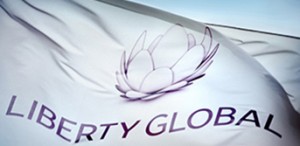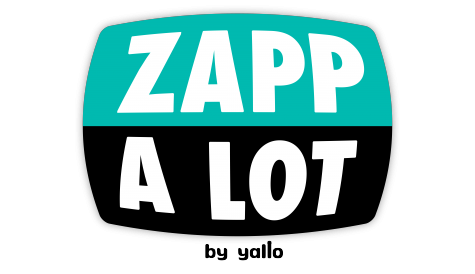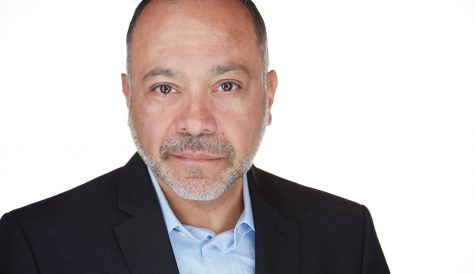
After more than 40 years of operation, DTVE is closing its doors and our website will no longer be updated daily. Thank you for all of your support.
Convergence conundrums
 Liberty Global’s management strongly believe that the company’s share price is cheap, and the forthcoming sale of the cable giant’s German and CEE businesses is seen as an opportunity to buy back shares and thereby return cash to investors.
Liberty Global’s management strongly believe that the company’s share price is cheap, and the forthcoming sale of the cable giant’s German and CEE businesses is seen as an opportunity to buy back shares and thereby return cash to investors.
Charlie Bracken, Liberty’s chief financial officer, used his presence at the recent Morgan Stanley European Media & Technology conference to go through the options the company has for the cash it will generate from the sale and explicitly ruled out making any big acquisitions. Bracken said that Liberty may look to adjust its debt levels to match its reduced scale after the Vodafone deal is completed, but he was clear that the top priority would be to buy back shares, something that has also been made clear by CEO Mike Fries.
The Vodafone scale and the absence of an ambition to make major new purchases has raised some questions about where Liberty goes from here. The UK’s Virgin Media is Liberty’s main asset and its most profitable unit. Of its other main businesses, VodafoneZiggo in the Netherlands is a joint venture, and Liberty has indicated that it will either buy or sell within a year or so. Majority-owned Telenet in Belgium is looking to expand, but Liberty has also indicated it could be open to a sale or combination of its struggling Swiss business with that of mobile player Sunrise.
Bracken kicked off his talk at the Morgan Stanley event by endorsing the view that the next step change for the cable industry is to combine fixed and mobile assets. Liberty’s legacy in the fixed-line business means that its approach to mobile has been of necessity somewhat more improvised than that of the likes of Vodafone or Altice. Bracken said that the company was very happy with its current MVNO arrangements in the UK and Switzerland and did not need to make mobile acquisitions or strike a joint-venture agreement in those markets, as it has done in Belgium and the Netherlands.
Bracken, like his boss Mike Fries, combines an awareness of the importance of convergence with a healthy dose of skepticism about the attractiveness of the mobile business per se. He said at the Morgan Stanley event that “the key factor” for Liberty was how “very tough” the mobile business currently is, with some 50 or so mobile operators across Europe fighting each other for increasingly cost-conscious customers. While combining fixed and mobile assets delivers cost synergies, competition between converged players also leads to declining mobile ARPU.
Liberty’s management have on the whole seemed more enthusiastic about prospects on the fixed side of the business, with both Fries and Bracken expressing confidence that Project Lightning, Virgin Media’s build-out of fibre to greenfield sites, will deliver a healthy return. At Morgan Stanley, Bracken said that this project would deliver the bulk of growth for the UK business, with the existing Virgin Media footprint returning cash but delivering much slower growth, either in terms of pulling in new subscribers or extracting more money from current ones.
Project Lightning, on the other hand, he said, would provide “very attractive” returns with the 30%-plus penetration rates it was currently achieving, and could deliver more as Liberty improves its marketing on the basis of experience. He said that Project Lightning was, on the other hand, a cashflow negative business, and hinted that some change of structure could be in the offing to take this into account.
The discussion of how to treat infrastructure investment found an echo in two other news stories this week. France’s Altice, which has enjoyed a rollercoaster ride over the last year and is still in the process of making changes that will secure investor support, posted vastly improved operational statistics in its fourth quarter earnings, with a return to subscriber growth in France both on the fixed and mobile that required a heavy cut in revenue and earnings to achieve.
Founder Patrick Drahi told analysts that the ownership of infrastructure and content together would make a big difference to the company’s growth prospects compared with that of peers who lacked one or other of those elements. However, he signalled an openness to partnering with other investors on the infrastructure side. Drahi was primarily referring to the build out of fibre to new areas, but, as an aside, he also indicated an openness to selling a stake in the domestic French cable operation if “somebody loves it as much as I do”.
The other story that foregrounded treatment of infrastructure as an investment was the peremptory changing of the guard at Telecom Italia, the latest episode in the long-running battle between investors Vivendi, with its long-term industrial plan based on convergence – in this case also of content and infrastructure – and Elliott Advisors, with its desire to “realise value” quickly by selling off the Telecom Italia network, possibly to be combined with wholesale fibre outfit Open Fiber in an initiative supported by the governing M5S party.
While these stories are in many ways very different, they highlight the challenges operators face in finding a way to fashion a coherent growth story based on convergence. People may want content, fixed broadband and mobile from a single provider, but there is no clear consensus about how to deliver all that and maintain pricing, while investing in expensive infrastructure and providing at least the prospect of a return to investors.


